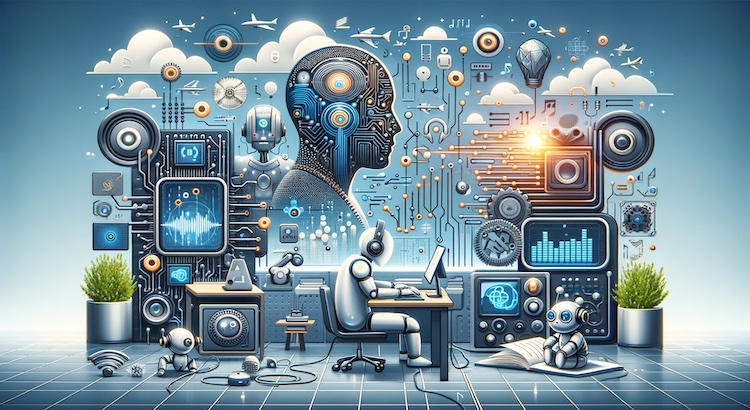AI vs. Human Transcription: Which is Right for You?
Introduction
Accurate transcription is more important than ever in the digital age. Legal, medical, academic, and media industries need reliable transcripts to ensure effective communication and accessibility. As technology improves, businesses now choose between AI-driven transcription services and human transcriptionists to get their audio and video files transcribed.
This guide explains how both methods work, shows their strengths and weaknesses, and helps you understand which option suits your needs.
The Rise of AI-Driven Transcription Services
How AI Transcription Works
Artificial intelligence tools now convert speech to text quickly. Using machine learning and natural language processing, these systems can turn hours of audio into text in minutes.
- AI can process large audio files fast.
- It handles many files at once, making it efficient for big projects.
- Users get fast turnaround, sometimes in real-time.
Strengths of AI Transcription
- Speed: AI is much faster than humans.
- Cost: Automated services often cost less.
- Scalability: AI can manage heavy workloads easily.
One study found AI tools delivered transcripts in less than half the time of human transcribers (2022).
Weaknesses of AI Transcription
- Accuracy drops with poor audio or background noise.
- AI struggles with multiple speakers and heavy accents.
- Specialized vocabulary is hard for AI to understand.
- AI cannot always catch humor, sarcasm, or context.
A review of AI services showed average accuracy rates between 80% and 90%, dropping much lower when audio quality is poor or many speakers are present (2021).
Because of these limits, many businesses use hybrid AI transcription subscriptions to combine the speed of AI with human review.
The Enduring Value of Human Transcriptionists
How Human Transcription Works
Human transcriptionists listen to audio files and type out every word. They use their judgment to catch context, emotion, and nonverbal cues.
Strengths of Human Transcription
- High accuracy: Humans can decipher unclear speech and heavy accents.
- Context: Transcribers understand grammar, tone, and situations.
- Custom formatting: Humans meet special style or formatting requests.
- Checks for errors: Humans can proof, edit, and improve AI drafts.
In fields such as legal, medical, or academic research, accuracy is critical because small mistakes can have big consequences.
Challenges with Human Transcription
- Slower turnaround compared to AI.
- Costs more for large or frequent projects.
- Less scalable during busy periods.
However, for sensitive or high-stakes projects, using professional transcription services is often worth the cost.
Combining the Best of Both Worlds
Many top services use a hybrid approach. AI creates a quick first draft. Then, skilled humans proof and edit for clarity and accuracy.
- Faster than humans working alone.
- More accurate than AI-only transcription.
- Lower costs than all-human teams.
Options like transcription proofreading services offer AI plus human editing for top results.
Why Transcription Services Matter for Accessibility
- Transcripts help people who are deaf or hard of hearing understand audio content.
- Schools use them to create searchable records and study materials for all learners.
- Closed captions and subtitles make video accessible on social media and streaming platforms.
In 2023, the World Health Organization found that over 1.5 billion people have some level of hearing loss (2023). Accurate transcripts and captions are crucial for digital accessibility.
Learn more about specialized closed captioning services and subtitling services that make videos easier to understand.
Choosing the Right Transcription Option
Consider the Following:
- Project size and deadline: If speed matters, try AI or a hybrid.
- Audio quality: For low-quality or multi-speaker files, go with human services.
- Content type: Legal and medical fields need human accuracy.
- Budget: Automated services save money for simple projects.
- Language needs: Choose translation or audio translation for multilingual projects.
For transparent and affordable options, check transcription pricing or captioning services pricing.
How Transcription Services Will Evolve
AI technology gets smarter every year. In the future, AI will close the accuracy gap for most general projects (2024). Still, experts predict humans will remain necessary for final editing and complex tasks.
- Expect better automatic language detection.
- AI will handle more accents.
- More services will use a hybrid model.
Whether you need speed, accuracy, or both, there is a solution for every workflow.
Conclusion
Both AI and human transcription have important roles. Fast, affordable AI helps with large or simple projects. Human transcriptionists deliver detailed, accurate work for complex, sensitive, or high-profile files.
GoTranscript offers all these solutions—from human transcription to automated services, as well as captioning and translation options. You can order transcription online or upload captions to make your content accurate, accessible, and ready for any audience.



















 Verified Order
Verified Order